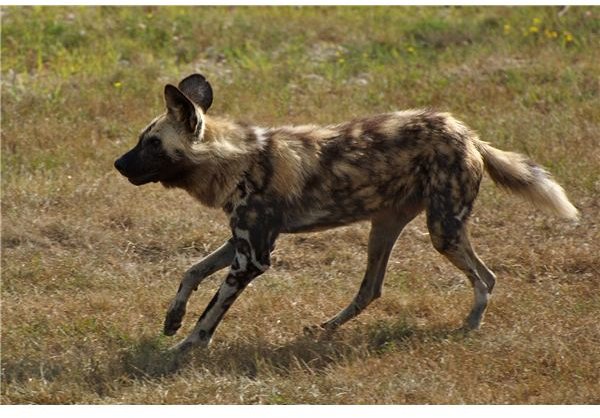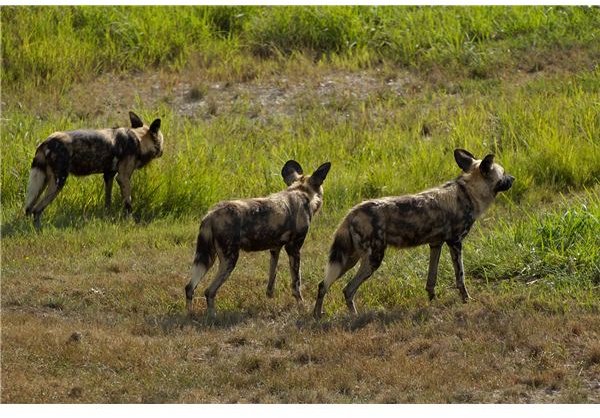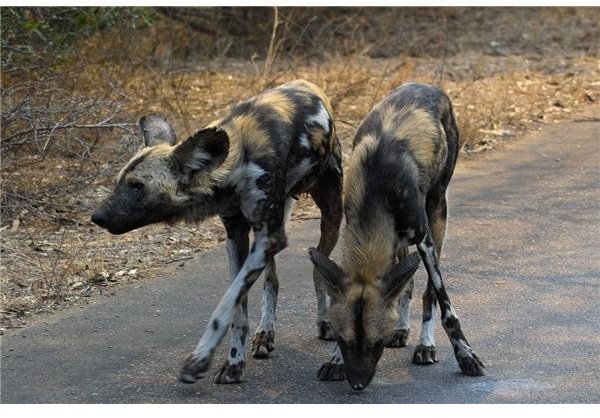The African Wild Dog
The African Wild Dog has been a presence all across Africa for the entirety of human memory, yet their populations are dwindling, their packs reduced to a mere scattering of isolated packs across both forest and savanna: an endangered species. Despite their perfect, yet often unique adaptations to the fiercely competitive life of an African predator, their numbers are continuing to drop. Why? This article with explain.
Appearance & Packs
The African Wild Dog is the only species in the genus Lycaon, though still a close relative to other famous canines like foxes, dogs, wolves and more, all of which are in the family Canidae. The African Wild Dog mostly keeps to canine proportions, coming to waist level, headed by a pair of distinctive “Mickey Mouse” ears.
The haphazard splattering of yellow, black and white marks that so characterize these dogs is what helps them identify each other: each set of markings is unique to the individual. They have the highest “Bite Quotient” of any mammal—that is, the ratio of the strength of their bite to their size. This comes in handy when it comes to the tearing and rending of bony carcasses, being carnivores.
The social structure is unique amongst mammals. There are entirely separate hierarchies for males and females, yet physically speaking, males and females are close to the same size and strength. Sometimes a pack will consist of only one gender, and will join to form a single pack, or at other times split into their respective genders again. Dominance is decided entirely without bloodshed, even in such touchy matters as who gets the first bite from a fresh carcass. This lack of internal aggression is quite startling, especially compared to the violence between other pack mammals.


Range & Numbers
The range of the African Wild Dog species is huge, making both individual packs and the species as a whole extremely difficult to keep track of. Primarily found in eastern and southern Africa, while they prefer deciduous forests, they can just as well be found in savanna such as the Serengeti.
It is estimated that they once numbered at nearly half a million all across Africa, but are now at only a few thousand in less than 2/3 of their original range, with many packs now in almost complete isolation from each other. The largest populations are centered in the Selous Game Reserve in Tanzania, and in northern Botswana and eastern Namibia.
The Danger
Because of the huge ranges they require, they are acutely sensitive to habitat loss and fragmentation. Most national parks are too small to even begin to satisfy a pack of these relentless predators. Also, because of this reduced range, where previously many large carnivores coexisted in relative peace over the expanses of Africa, there is now frantic competition for many of the same prey species. Lions will even seek out African Wild Dogs to kill.
The isolation of many of the packs from each other due to intervening human development, as well as the increasingly cramped ranges forced upon them by the drawstring of development, make them more susceptible to viral diseases, such as rabies and distemper: local extinction is an ever-present threat. There are some veterinary programs in place to attempt to improve their immunity to such diseases.
African Wild Dogs are also extensively hunted by local livestock herders and game hunters. Many conservationists have suggested that this is largely due to the bad connotations of their common name, and so propose that they should instead be referred to as the Painted Hunting Dog, which is somewhat more pleasing to the ear. This has had limited effect, and many are skeptical as to the effectiveness of such a change. There are also many efforts to work with locals to conserve African Wild Dog habitat.
Of course, the African Wild Dog doesn’t get nearly the publicity of other African carnivores. The lion is romanticized throughout Western civilization, the cheetah renowned for its feline grace. Even the hyena, famous for its eerie laughter, gets is share of conservation efforts. However, the somewhat comical appearance of the African Wild Dog makes it a difficult subject to raise money for.
African Wild Dogs are principally researched as part of the continuum of African predators in the Botswana Predator Conservation Trust (BPCT.) Conservation groups focusing on the African Wild Dogs include the African Wild Dog Conservancy and the Namibia Nature Foundation’s Wild Dog Project–check out any of them and see what you can do to help!
